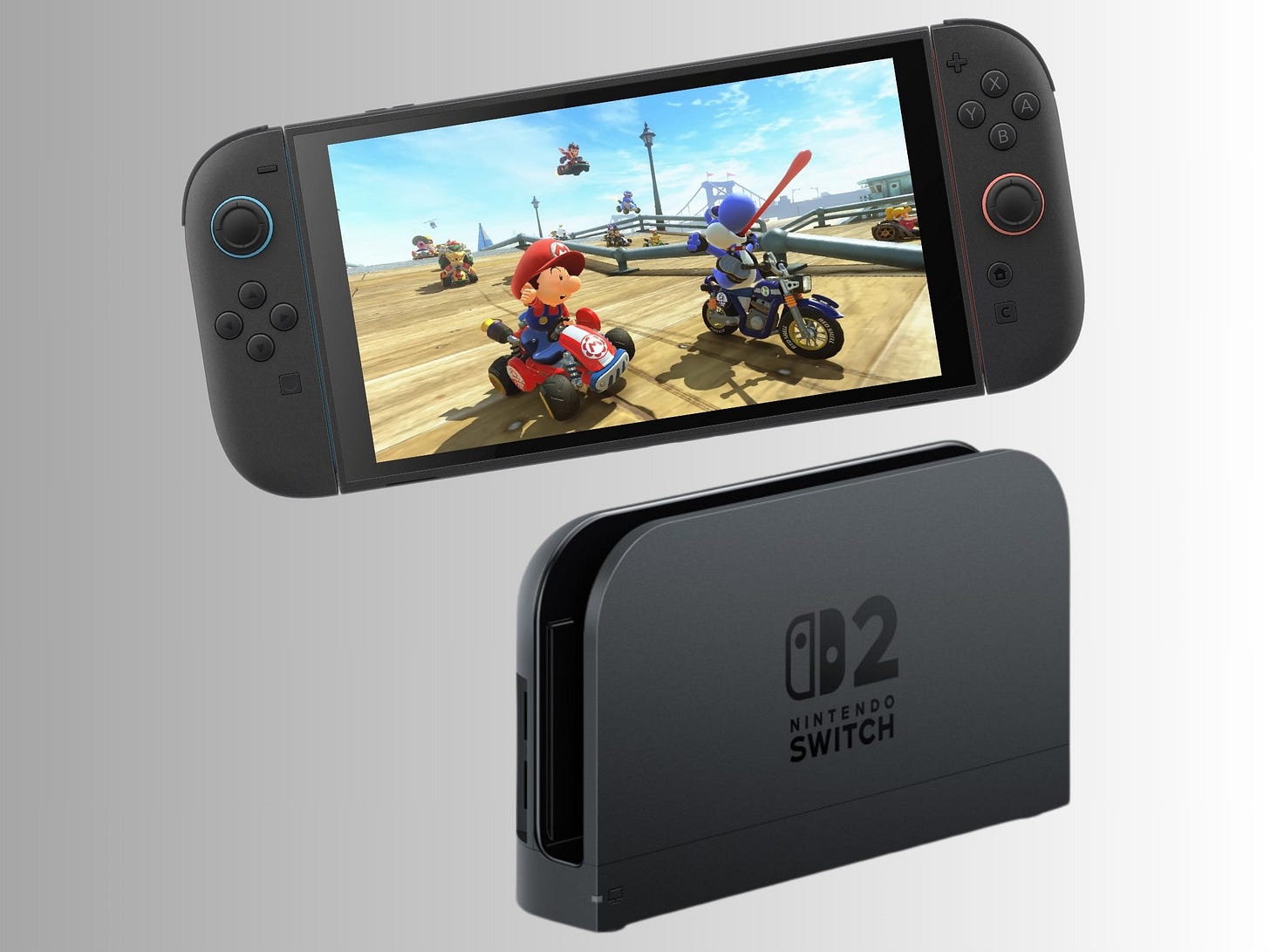Let me be honest. Sometimes when people start throwing around tech specs, my brain checks out. Recently, Nintendo finally dropped the official specs for the Nintendo Switch 2. That should have cleared things up, but it honestly made things more confusing (at least at first).
When you are not a hardware expert, looking at things like CPU architecture, bandwidth, or refresh rate can feel like reading a different language. You check out a couple YouTube videos. Some people are pumped; others are underwhelmed. And you're left sitting there wondering what to believe.
So, like I always do when I’m unsure, I searched around. And yes, I used a little AI to help me understand it all better.
The analysis you’re about to read is based on Nintendo’s officially released specs. I also pulled comparisons from Digital Foundry’s excellent side-by-side chart that breaks down how the Switch 2 stacks up against the original Switch. I’ve tried to keep it as simple and honest as possible.
This is a learning space, after all. Learning sometimes means using every tool available. So, if AI-generated help isn’t your thing, I get it. But I found this really enlightening, and maybe you will too.
What the Switch 2 Specs Actually Mean (Without the Tech Headache)
1. Display: 7.9-inch LCD, 1080p, HDR10, VRR up to 120Hz
Not OLED, but:
Bigger than the original (6.2 inches)
Higher resolution (1080p vs 720p)
Supports HDR10 for deeper color
VRR (Variable Refresh Rate) allows smoother motion in games
Translation: A big step up visually, especially for handheld play.
2. CPU/GPU: Custom NVIDIA Processor
Nintendo did not give us clock speeds or core counts, but this is a brand-new custom chip made with NVIDIA. Based on everything Digital Foundry analyzed, it is likely Ampere-based, the same tech behind RTX 30-series cards.
Why this matters:
Huge leap from the Tegra X1 used in the original Switch
Expected to support DLSS, which lets games look sharp even at lower native resolution
More efficient and modern overall performance
It might not match PS5 power, but it brings Nintendo much closer to modern standards.
3. Video Output: Up to 4K at 60fps (Docked)
Max resolution in docked mode is now 3840x2160 (4K)
Also supports 1080p or 1440p at 120fps for smoother performance
Handheld tops out at 1080p
Compared to Switch 1: The original maxed out at 1080p in docked mode. Now we are getting higher fidelity for living room gaming.
4. Storage: 256GB UFS
That is eight times more than the original Switch’s 32GB. It is also much faster thanks to UFS (Universal Flash Storage).
Why this matters:
Faster load times
More space for big games (finally)
5. Audio and Microphone Upgrades
Built-in stereo speakers with clearer sound
Supports 5.1 surround over HDMI
Built-in mic with noise and echo cancellation for better voice chat
6. Connectivity: Wi-Fi 6 and LAN Port in Dock
Faster, more reliable wireless
Built-in LAN means no need for USB dongles for online play
7. Battery: Same Size, Same Range (2 to 6.5 Hours)
Still a 5220mAh battery like the OLED model. Do not expect longer playtime, but expect better performance within that same window.
8. Joy-Con 2: Minor Tweaks, Better Sensors
Same general look but with improved sensors, including a new "mouse sensor"
HD Rumble 2
Slightly more ergonomic design (based on specs)
9. Backward Compatibility: Confirmed
You can still play your old Switch games. Physical cartridges from the first system are supported.
TL;DR: Why This Is a Big Deal
Nintendo is not trying to beat Sony or Microsoft in raw power. They never have. But the Switch 2 is a serious leap forward in all the areas that matter:
Handheld visuals and audio are much better
Docked output now supports 4K
Load times should see a major improvement
Online play and voice chat finally feel up to date
Even though early leaks suggested lower CPU clock speeds, the newer architecture means it still performs better.
A Note on AI and Ethical Use
While writing this, I also wanted to be transparent. I recently learned that I have been blocked by a few users on BlueSky, likely because I use AI to help with content like this. So here is where I stand:
I use AI as a tool, not a replacement. I do not spam. I do not mass-generate content. And I do not exploit artists. If I generate an image or idea with AI, it is because it helped me get unstuck. The final vision is mine.
I believe artists should be credited and compensated if their work was used to train AI models.
I also believe game developers should not rely on AI to make full assets unless it is part of a thoughtful and collaborative process. For example, using it to mock up an idea that a human artist will later finish is totally valid.
If you follow this blog, just know this: I always strive to use AI ethically.
Thanks for reading. Keep learning, stay curious, and do not be afraid to ask, “Wait, what does that actually mean?”
— Prof. Rock



